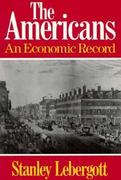Question
You sell toothpaste to customers C1 and C2. You can sell the toothpaste in 8-ounce tubes, 16-ounce tubes, or offer both sizes of tubes of
You sell toothpaste to customers C1 and C2. You can sell the toothpaste in 8-ounce tubes, 16-ounce tubes, or offer both sizes of tubes of toothpaste. The table below shows each customer's willingness to pay for the different sizes of tubes of toothpaste. For example, customer 1 would pay up to $3.00 for an 8-ounce tube. Customer 1 would also be willing to pay up to $5.00 for 16 ounces of toothpaste. We will suppose that consumers are indifferent between two 8-ounce tubes of toothpaste and 16 ounces of toothpaste that are packaged together (i.e., "bundled") as a single
16-ounce tube.
The table below tells us that each consumer has three options: 1) buy nothing; 2) buy a single 8-ounce tube; or 3) buy 16 ounces (which could mean two 8-ounce tubes or a single 16-ounce tube, depending on how we package our toothpaste). Assume that each consumer selects the option that provides them the greatest consumer surplus (CS = reservation price - price). Finally, suppose that MC of an 8-ounce tube of toothpaste is $1.50, and the MC of a 16-ounce tube is $3.00.

Step by Step Solution
There are 3 Steps involved in it
Step: 1

Get Instant Access to Expert-Tailored Solutions
See step-by-step solutions with expert insights and AI powered tools for academic success
Step: 2

Step: 3

Ace Your Homework with AI
Get the answers you need in no time with our AI-driven, step-by-step assistance
Get Started


